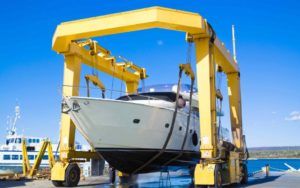Source: PatriotInsuranceco.com
 Sadly, boating season will come to an end soon, and Old Man Winter will be paving the way for snowmobiles. Winter storage for boats takes some careful planning. If you follow a checklist, winterizing your boat can be easy, ensuring your boat will be in great shape come spring.
Sadly, boating season will come to an end soon, and Old Man Winter will be paving the way for snowmobiles. Winter storage for boats takes some careful planning. If you follow a checklist, winterizing your boat can be easy, ensuring your boat will be in great shape come spring.
For safe winter storage for your boat, follow our checklist:
Inspect for damage.
- Thoroughly inspect the boat for any damage. Repair now, if possible.
- Check electrical systems and appliances to make sure they are functioning properly (make repairs before storing the boat, if possible).
- Check the battery to make sure it is fully charged before storing.
Prep the fuel system.
- Fill the fuel tank but leave enough room for expansion.
- Treat the fuel with a stabilizer, then run the engine for 10 minutes to get it circulating throughout the engine.
- Seal the fuel valves.
Winterize the engine.
- Change the oil and replace filters.
- Flush the engine with fresh water, then let it drain.
- Wash the engine with soap and water. Rinse thoroughly.
- Fog the engine cylinders with an aerosol fogging solution.
- Lubricate the engine’s grease fittings.
Flush the cooling system.
- Drain any remaining coolant.
- Run a less toxic propylene glycol antifreeze through the system.
Clean inside and out.
- Clean the boat inside and out, removing any plant life or barnacles.
- Remove any valuables from inside the boat.
- Take out any food or drinks.
- Bring home any cushions and store them in a cool, dry place.
Store your boat.
- Remove the battery and store it in a safe, dry spot.
- Consider purchasing a dehumidifier for the storage area to help prevent mildew.
- Lock your boat (and leave a key with the marina manager, if applicable).
- Cover and store your boat.
- Check your boat periodically or have the marina check it and report to you.
Then, when spring comes around, make sure you have the right protection for your boat. Talk to an Allen Insurance representative about boat insurance.

